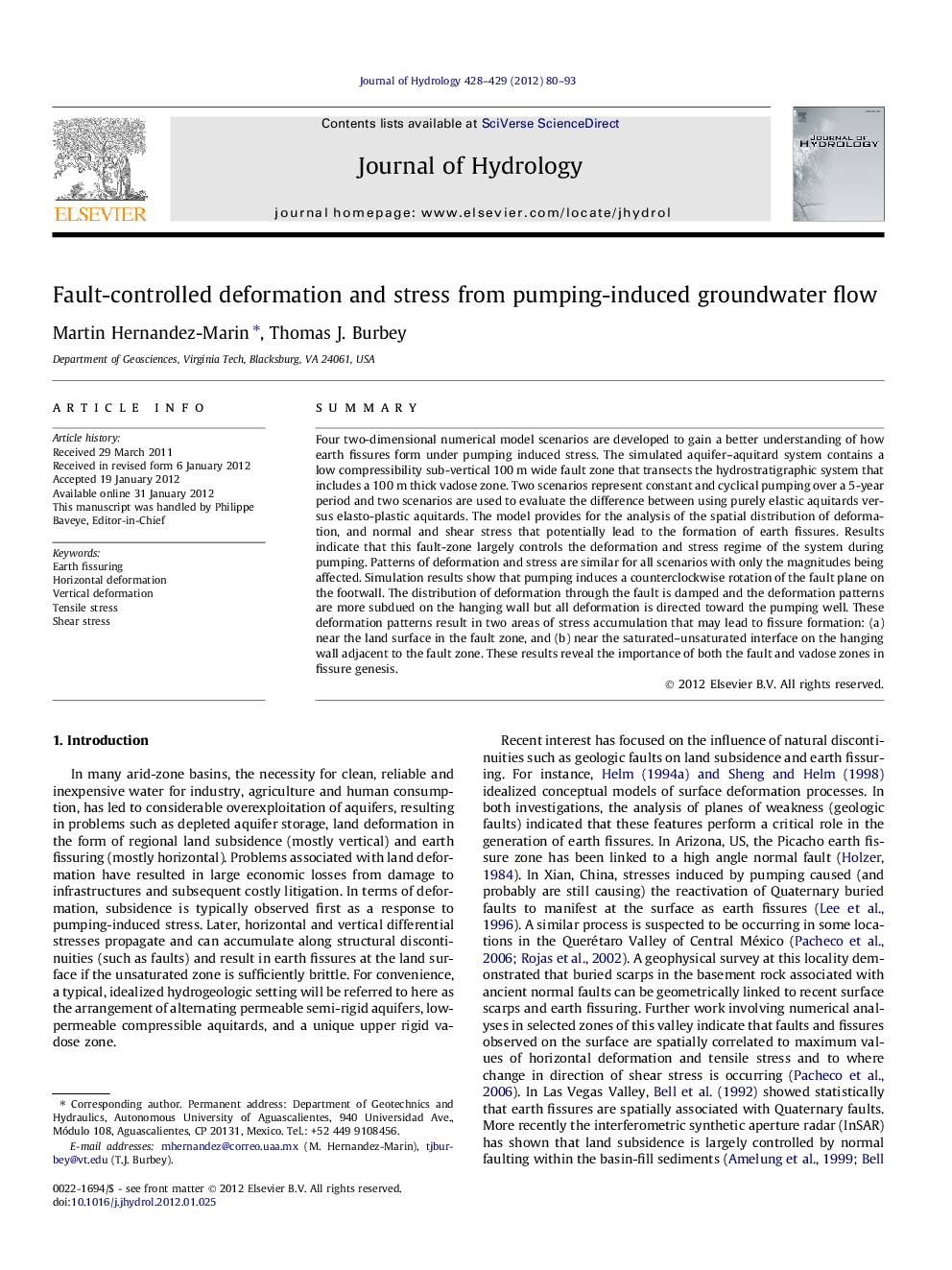| Article ID | Journal | Published Year | Pages | File Type |
|---|---|---|---|---|
| 4577081 | Journal of Hydrology | 2012 | 14 Pages |
SummaryFour two-dimensional numerical model scenarios are developed to gain a better understanding of how earth fissures form under pumping induced stress. The simulated aquifer–aquitard system contains a low compressibility sub-vertical 100 m wide fault zone that transects the hydrostratigraphic system that includes a 100 m thick vadose zone. Two scenarios represent constant and cyclical pumping over a 5-year period and two scenarios are used to evaluate the difference between using purely elastic aquitards versus elasto-plastic aquitards. The model provides for the analysis of the spatial distribution of deformation, and normal and shear stress that potentially lead to the formation of earth fissures. Results indicate that this fault-zone largely controls the deformation and stress regime of the system during pumping. Patterns of deformation and stress are similar for all scenarios with only the magnitudes being affected. Simulation results show that pumping induces a counterclockwise rotation of the fault plane on the footwall. The distribution of deformation through the fault is damped and the deformation patterns are more subdued on the hanging wall but all deformation is directed toward the pumping well. These deformation patterns result in two areas of stress accumulation that may lead to fissure formation: (a) near the land surface in the fault zone, and (b) near the saturated–unsaturated interface on the hanging wall adjacent to the fault zone. These results reveal the importance of both the fault and vadose zones in fissure genesis.
► We study the effects of pumping and elasto-plasticity response in fissure formation. ► 2-D models include a fault zone transecting an aquifer–aquitard–vadose zone system. ► A pumping-induced fault-zone rotation is the main cause of fissuring in all cases. ► Fissuring is more affected by the type of pumping than by the mechanical response.
